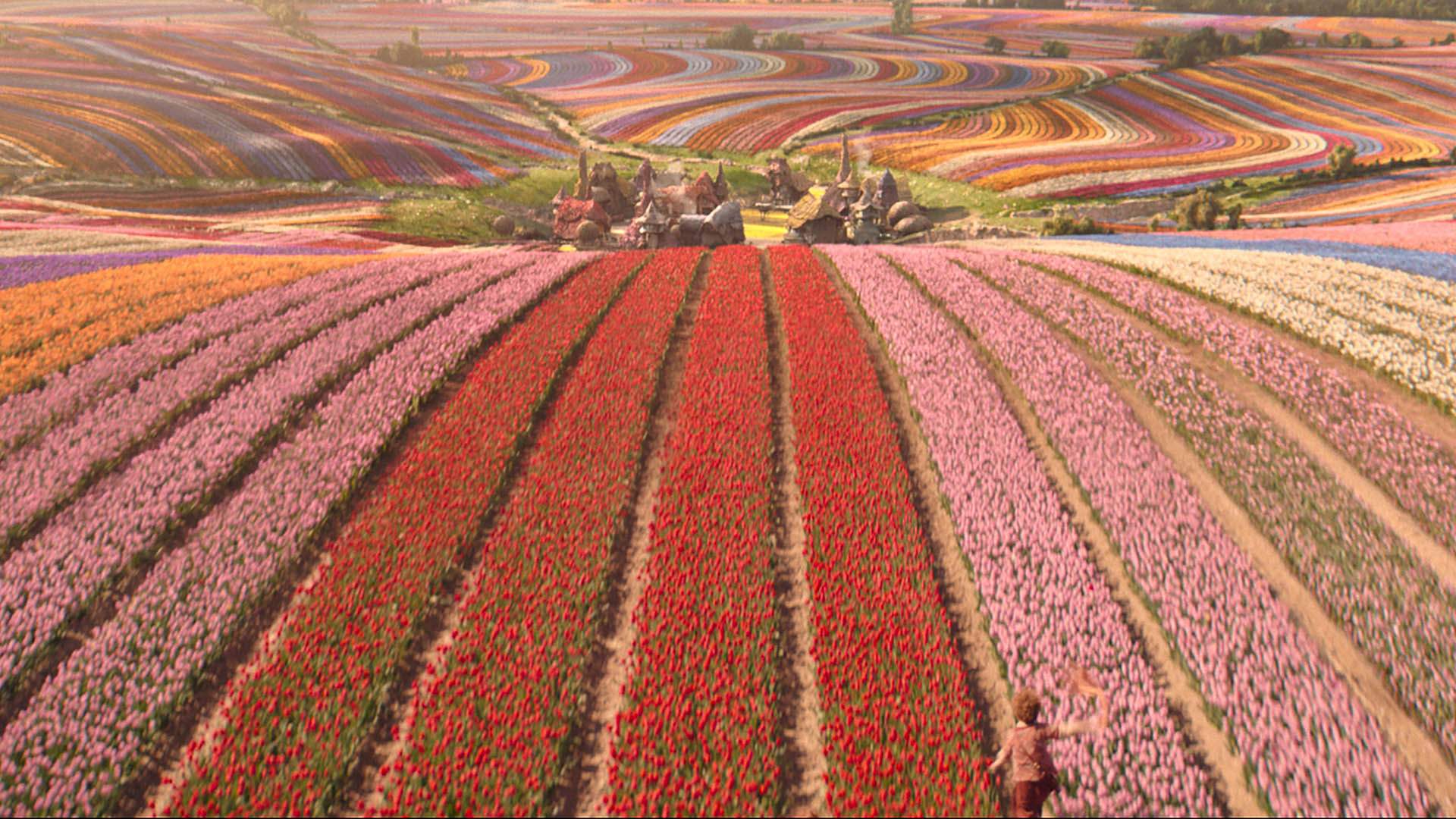More Than the Yellow Brick Road: Production Designer Nathan Crowley Talks Bringing 'Wicked' to the Big Screen
How do you recreate Oz? If you're Nathan Crowley, you plant nine-million tulips and build a mechanical version of Jeff Goldblum's head.
We're off the see The Wizard again: in not one but two movies, the first arriving in cinemas in November 2024 and the second in 2025, the wonderful world of Oz is returning to screens. It took a mere two years for L Frank Baum's 1900-published book to reach the theatre, with the debut film version following almost four decades later. Now, 85 years have passed since The Wizard of Oz initially entranced cinemas. Its latest big-screen comeback owes debts to both the page and the stage, but beyond the novel that started it all. Wicked first enchanted in print in 1995, when author Gregory Maguire conjured up an alternative Oz-set tale. Since 2003, it has worked its magic as a Tony-winning Broadway musical, before it too makes the eagerly anticipated leap to picture palaces.
The Life and Times of the Wicked Witch of the West, the novel's subtitle, explains Wicked's focus. Whether reading the book, seeing the play or watching the upcoming two features, audiences are whisked into origin-story territory — not only for the green-skinned Elphaba but for Glinda. At the Land of Oz's Shiz University, the pair meet and, despite their differences, cement a friendship. Even before they cross paths with The Wizard, everyone who has ever seen Judy Garland follow the yellow brick road with the Scarecrow, Cowardly Lion and Tin Man knows Elphaba and Glinda's destinies.

Giving Wicked the movie treatment: a wide-ranging cast and crew led by director Jon M Chu, with the Crazy Rich Asians filmmaker making his second and third stage-to-screen musicals in succession following In the Heights. On-screen, he's enlisted Emmy-, Grammy- and Tony-winner Cynthia Erivo (Pinocchio) as the misunderstood Elphaba, Ariana Grande (Don't Look Up) as Glinda and none other than Jeff Goldblum (Kaos) as The Wizard, plus Michelle Yeoh (A Haunting in Venice), Jonathan Bailey (Bridgerton), Bowen Yang (Saturday Night Live) and more. Off-screen, a six-time Oscar-nominee — five of them for Christopher Nolan (Oppenheimer) films — also couldn't be more pivotal.
When Academy Award recognition comes your way for art direction on The Prestige and The Dark Knight, then for production design on Interstellar, Dunkirk and Tenet — and for Damien Chazelle's First Man as well — jumping to Oz on Wicked's two parts might seem like a massive change. But English production designer Nathan Crowley is interested in world-building first and foremost, and has been ever since his first screen credit on as a junior set designer on 1991's Hook. Also on his resume recently: The Greatest Showman and Wonka. And, he's a veteran of Bram Stoker's Dracula, Braveheart, Mission: Impossible II, Escape From LA, Insomnia, Batman Begins, The Dark Knight Rises, John Carter and the Westworld TV series as well.
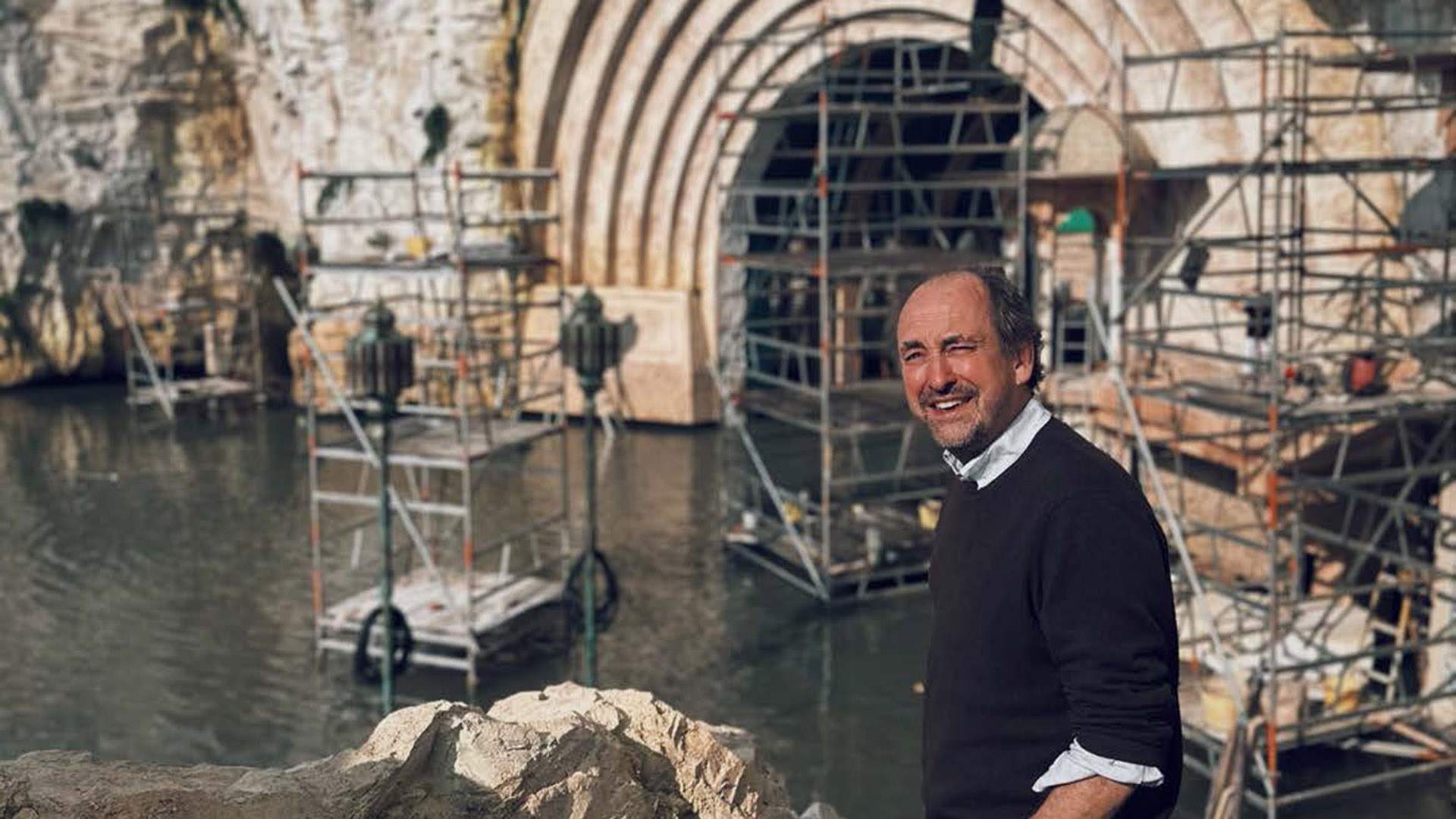
When you're taking a well-trodden path thanks to multiple books, the Wizard of Oz movie that's been beloved for generations, blockbuster stage musicals, and everything from The Wiz to Oz: The Great and Powerful, you're embarking on an enormous task. That isn't lost on Crowley, he tells Concrete Playground, although the full scope dawned on him slowly. Not only does he need to bring Oz to life beyond the painted backdrops of the Garland-starring film, but he has the job of creating Shiz University — not to mention a field filled with nine-million tulips as part of Munchkinland and a throne room featuring a mechanical version of Goldblum's head, plus various forms of transport, such as by rail, river and air.
Ahead of the first Wicked film's release in cinemas — including premiering at Sydney's State Theatre on Sunday, November 3, with Erivo, Grande, Goldblum, Bailey, fellow stars Marissa Bode (a screen debutant) and Ethan Slater (The Marvellous Mrs Maisel), plus director Chu, all in attendance — we also chatted with Crowley about those nine-million flowers, the joy of practical effects, aiming to get audiences to fall into a fantastical world, what he makes of his career so far and more.


On How Planting a Field of Nine-Million Tulips in Norfolk Is Symbolic of the Scale of the Task of Bringing Wicked to the Screen
"It was the first major challenge for me. My thing is, I love doing things practically because there's a colossal joy to it. So one of the first challenges was: what do all the munchkins do? I need something for them to do in their village. Okay, they're flower farmers and they use the dyes to make colours, because they're colourful people. And so each house, that allowed me lots of scope with the colours of the buildings.
So then it was like — and I think it must have been Jon — 'well, what if it's the colours of the rainbow?'. Which is a massive thing. So then what goes in strips of colour? Tulips? You grow tulips in strips of colour. So that's kind of where 'oh we need tulips'. And then it was like 'well, let's grow them'.
It was myself and the location manager Adam [Richards, Wonka], who I've worked with many times before. It like 'where can we grow tulips? We can go up to Norfolk'. He found a tulip farmer and was like 'let's go up there and see if we can grow'. I'm going quickly, but there's lots of between.
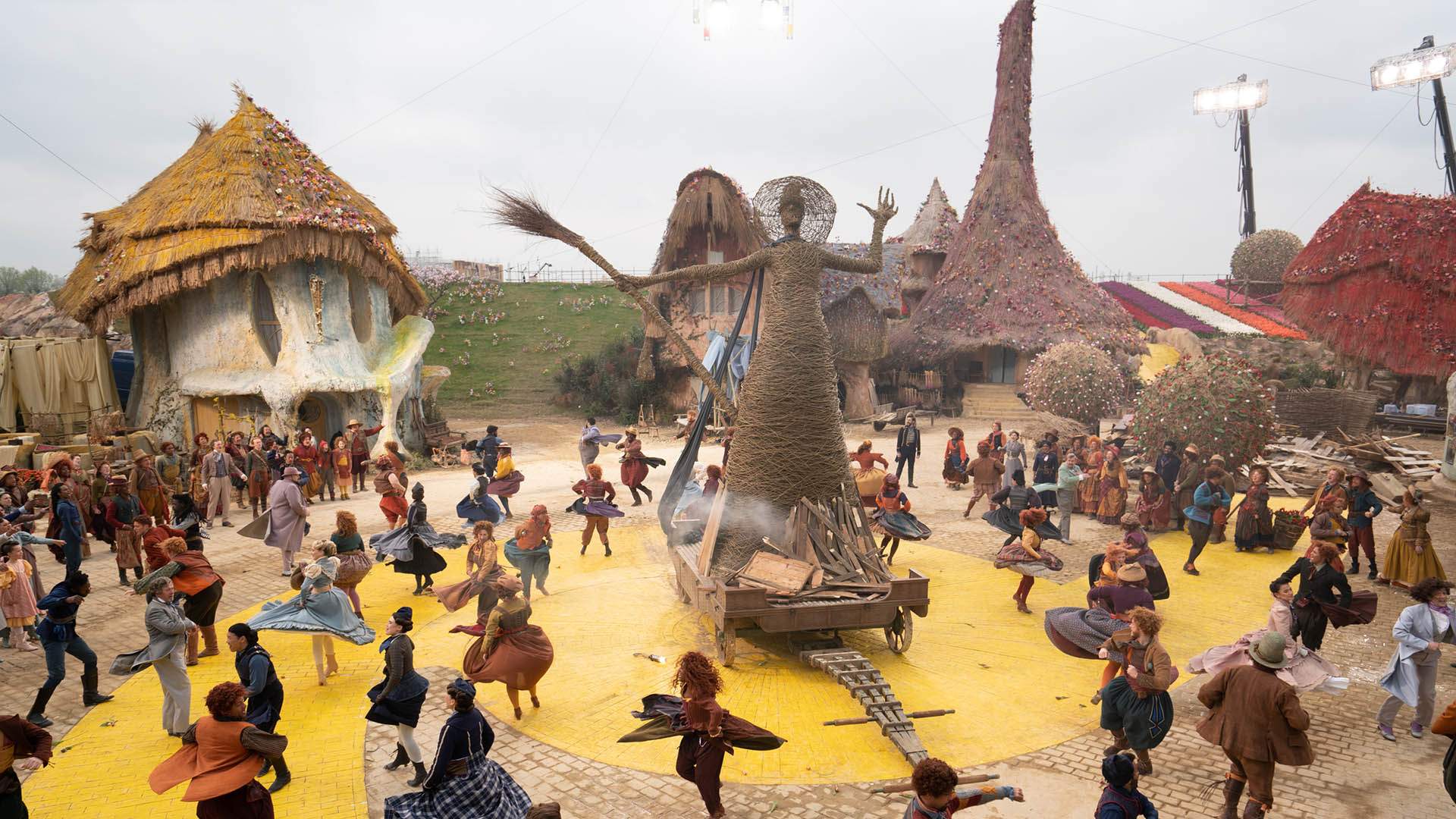
I planted 500 acres of corn in Interstellar in Canada. So I've been a farmer before and I knew if could find the right farmer — and with Adam's help, because ultimately it was crown property; I needed it to be without trees, because in Oz trees are circular. I needed it to be a perfectly large sky, a tulip sky. So we found Mark the farmer, who's just simply brilliant, and he got us our bulbs.
Then I had to go back to the production and explain: 'we have a field, we have permission from crown properties to plant, you need to write a check for tulips. You've got to get them from Holland. And we've got to get them in the ground quickly before it freezes'. When you're a flower farmer, you've got to get the bulbs in the ground.
And so there's a lot of umming and aahing, and it was difficult, but I think it set the pace of what we were trying to achieve. And Jon, and Donna Langley from Universal, was very into it. She was like 'I love it. Let's do it'.
We planted them and we got to know the farmer. He was into it, and we got the colours — and it was just a great life experience. You need to step out of your department occasionally and get into the real world. So, practical filmmaking. So that started it off, and then of course, it snowballs. But they all grew, they all worked. It was brilliant."

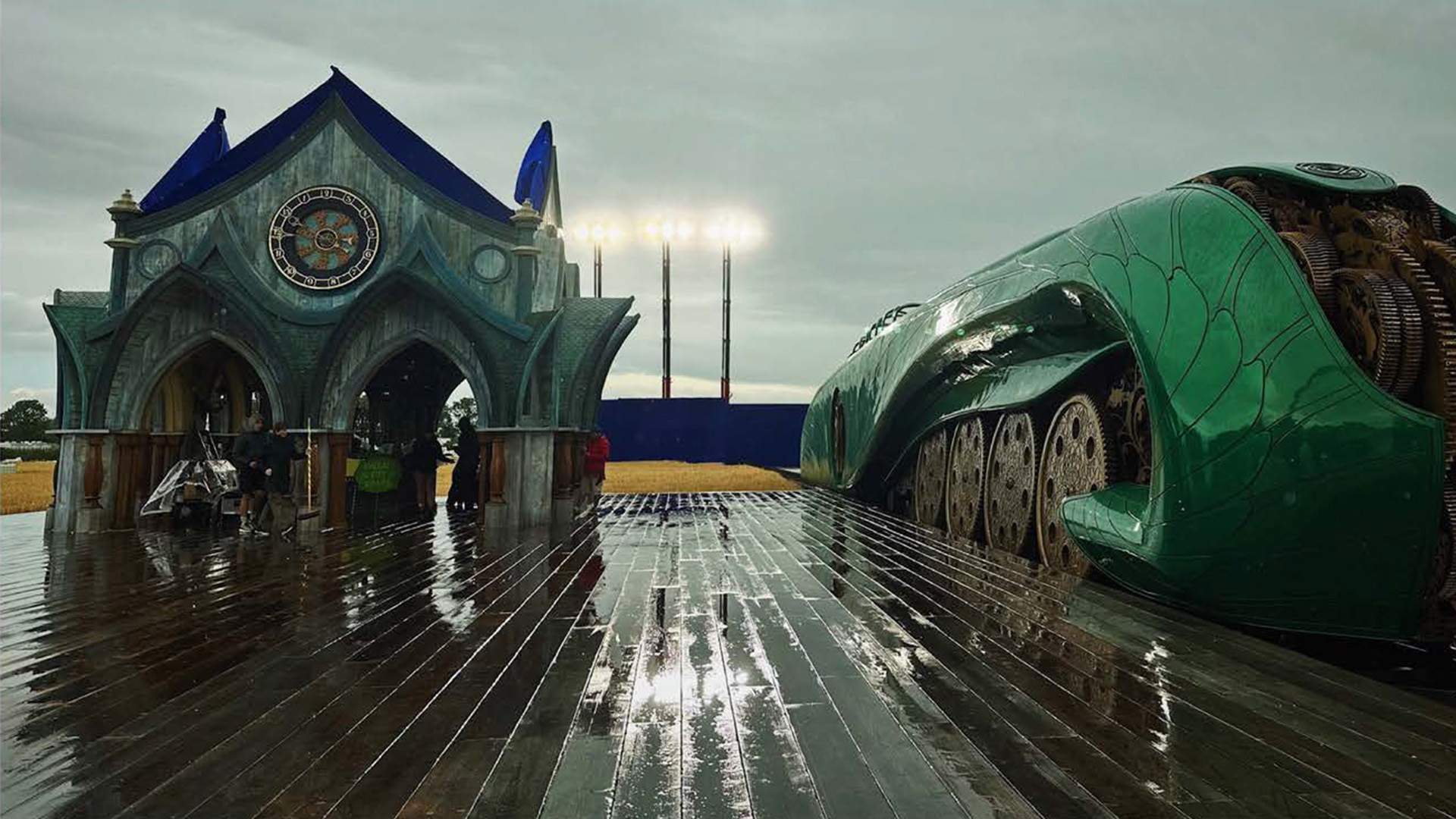
On Valuing Practical Effects in Age Where CGI Is Everywhere in Visual Effects — and Combining the Two
"That [CGI] is very powerful tool now. But you have many tools. We have 120 years of filmmaking experience.
My thing is if we can make it enough for real, and light it and get real photography, we can tell visual effects what it should look like and their job becomes symbiotic with ours — and we become one rather than working as a line.
So I always feel the balance is essential and we can do it. I guess it's so obvious to me that you build as much as you can until you can't foe whatever reasons: landscape, weather, money, time.
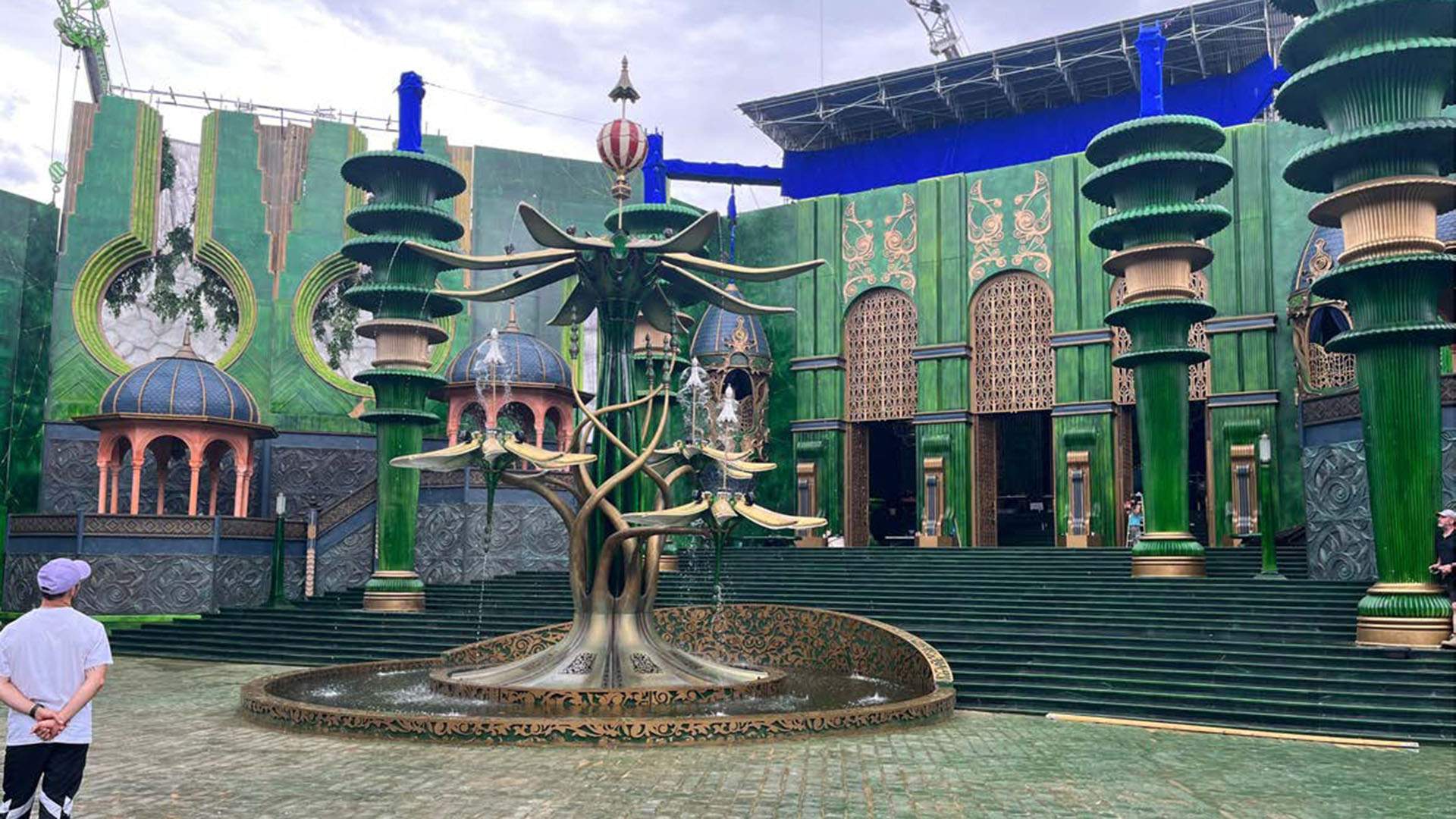
So you have to balance it — and then if you balance it, and this really goes back to the audience in the cinema, can you not make them not notice how you did it? Can you do a film, especially a fancy film, where they don't pay attention, they're into the film, they're not paying attention, nothing bounces them out, so you fall into the film?
Ever since I was little, when I go to the cinema, I want to fall into the telling of the story. And so I believe that we almost have to go quietly — and to do that, I strongly believe you have to do it practically, because if you suddenly cut to visual effects, I think audiences know that. The emotion is taken away from the audience. It flattens it.
So if you can make it seamless, I don't want the audience to notice. Because then you're just in it and you're into the emotion of it."


On the Massive the Scope in Not Just Bringing One of the 21st Century's Biggest Stage Musicals to the Screen, But Reimagining Much That's Crucial to The Wizard of Oz
"I guess I was a little naive about how big Wicked, the stage show, was. I had three daughters who had grown up and they were like 'what, oh my god!'. And The Wizard of Oz, to me, they sit side by side. What was brilliant is that Wicked is the alternative story to The Wizard of Oz — so together, what a piece of cinema.
The realisation I had to recreate Oz kind of slowly dawned on me. And that was like 'oh'. It was like 'Jesus, we've got to remake, we've got to figure out Emerald City'. And Emerald City was just a painting on a backdrop, and everyone's childhood, everyone's reimagined what that is — it's very clever. Everyone's filled in all the blanks of what they didn't show you.
So we're going to tread on people's nostalgia for Emerald City — and how do we do that? And then you've got the Wicked fans, there's little things that they want in the film, Shiz details, and it's very important.

But luckily we had Marc Platt [the film's producer, and also the stage musical's], who's all things Wicked. So he was my constant guide to Wicked. And then Wizard of Oz was just making sure I didn't hurt and I enlarged people's opinion of what Oz is, rather than shrunk it.
So, it was a massive challenge. The biggest challenges, the two films in my career that sit as giant design challenges: Wicked and Interstellar. And they both hurt your head. It's not a physical thing, it's like they hurt your design brain.

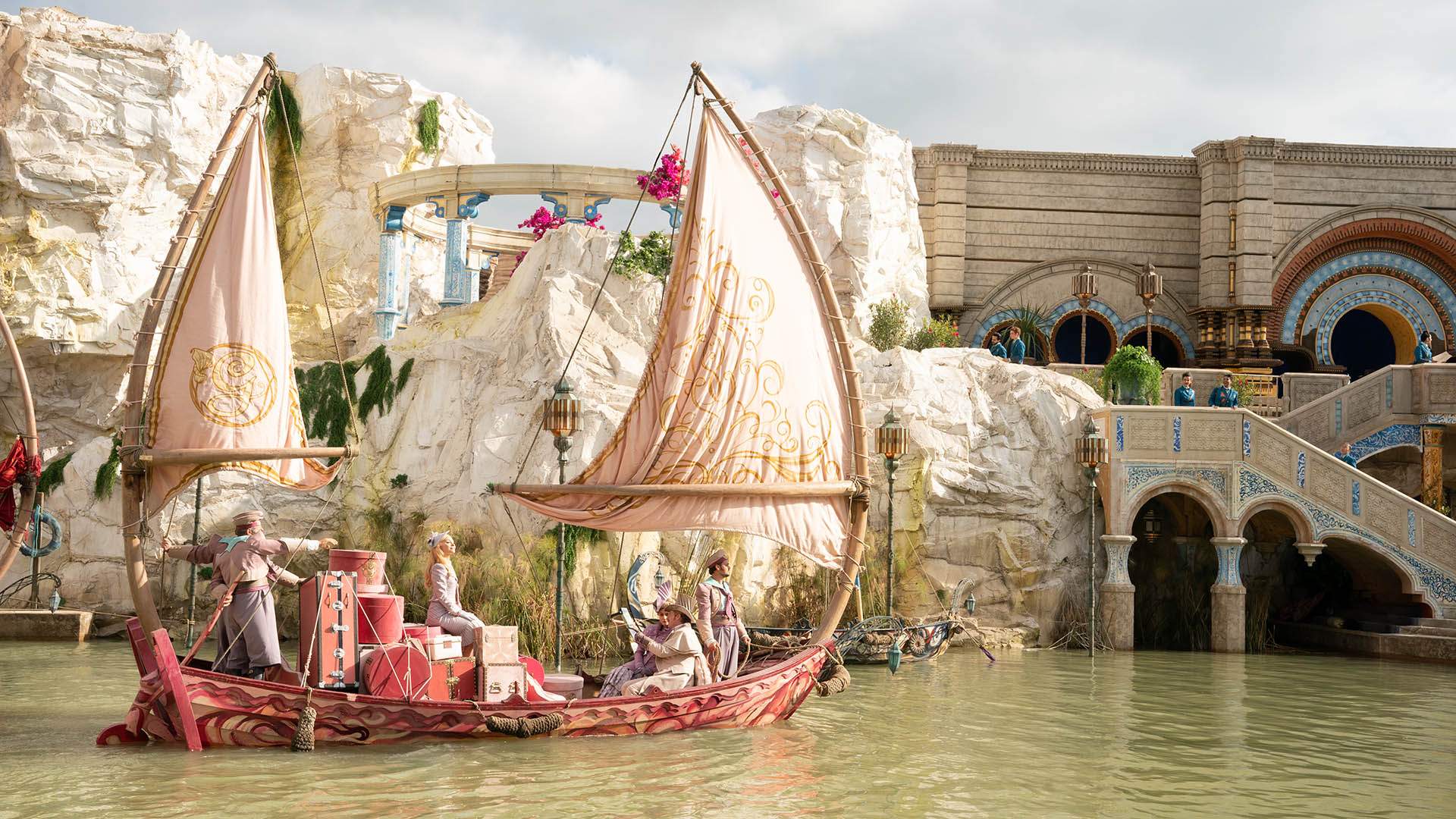
On How the Wicked Set Became the Most Complex of Crowley's Career So Far
"First of all, it was the design, because Shiz, there's so many versions of Shiz — the school, Hogwarts, Cambridge, there's all these perceived ideas. So, one, you have to find a design. And secondly, I realised that the first day of school when everyone comes in, we've got no horse and carriages because the animals aren't enslaved. We've got no trains because they belong to The Wizard, and we have to introduce them later. We can't come by airship, because the balloon belongs to The Wizard. There's no cars. So how do you get anywhere in Oz?
And then it was like 'oh, we go by a river' — which is a tradition. Of course we go by river. But what that means is the set, we have to build a giant water tank for the set so we can row the boat into the Shiz courtyard. And of course I like everything practically, so it's like 'we've got to build a giant water tank that takes seven days to fill'.
And that was a challenge because, if you know about practical filmmaking, there's never been a tank that didn't leak. So you have a servicing problem with it. Every tank always leaks.
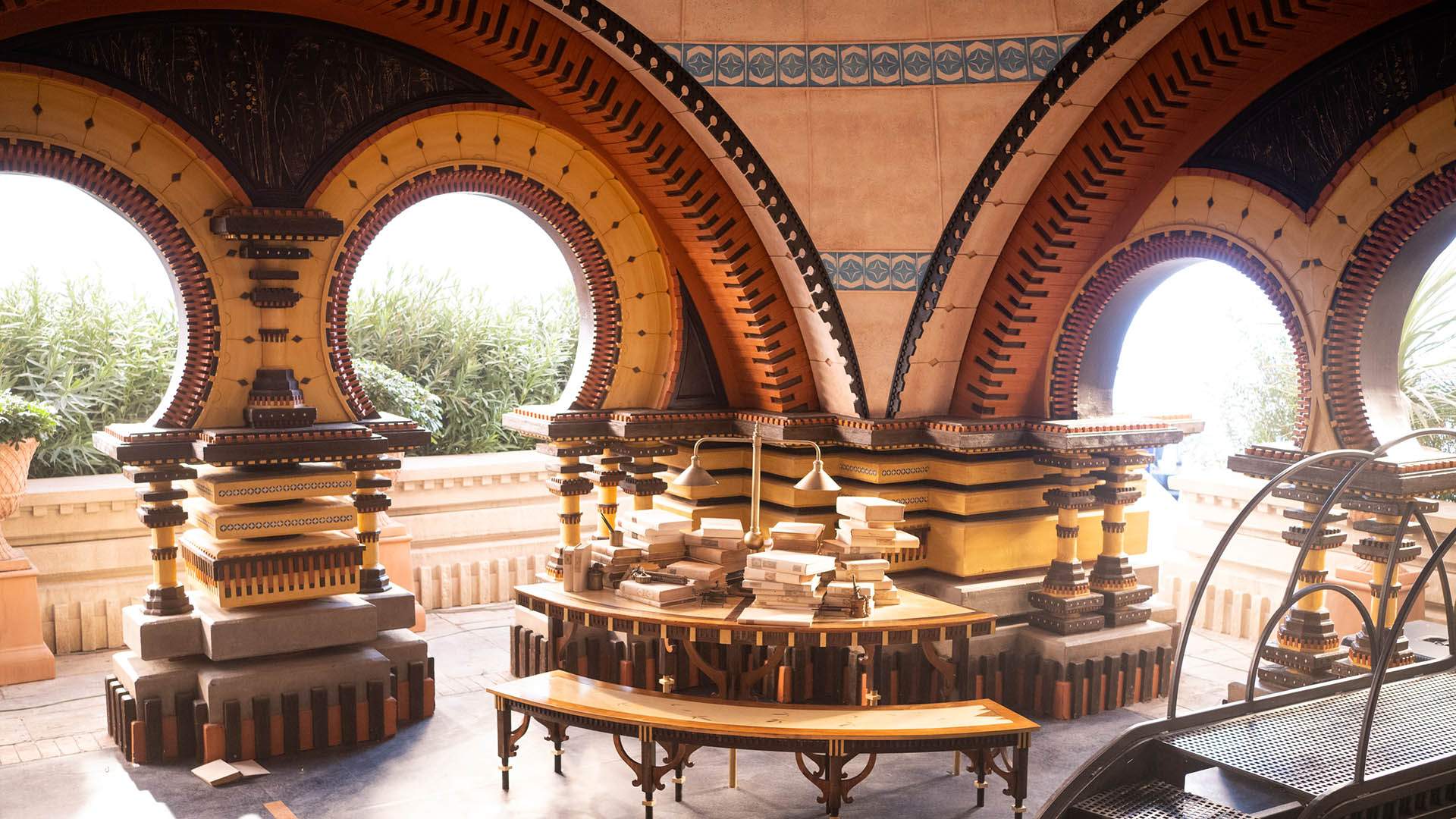
Then Shiz for me was about finding architecture. The Wizard of Oz is an American fairy tale, so I need Americana, so White City of Chicago, 1893 World's Exposition, those giant Burnham and Root arches. I need to put some Americana in it. I need to put the scale of America in it.
But then I need the nostalgia of every great ancient educational facility. So I need you to, when you walk into to Shiz, you feel this sort of ancient learning vibe. I need to take architecture from all over the world and change the materials of it, and try to blend it — from onion domes to Venice staircases.
So I was really trying to make it fantastical, but familiar. So when you watch it, you'll see something that's kind of familiar to you. And if you've been a tourist in in Italy, you'll feel it a bit — or if you've been to Spain, to the Alhambra, you'll feel it a bit. Or maybe a little bit of Melbourne. Not much Georgian architecture, I'm afraid.

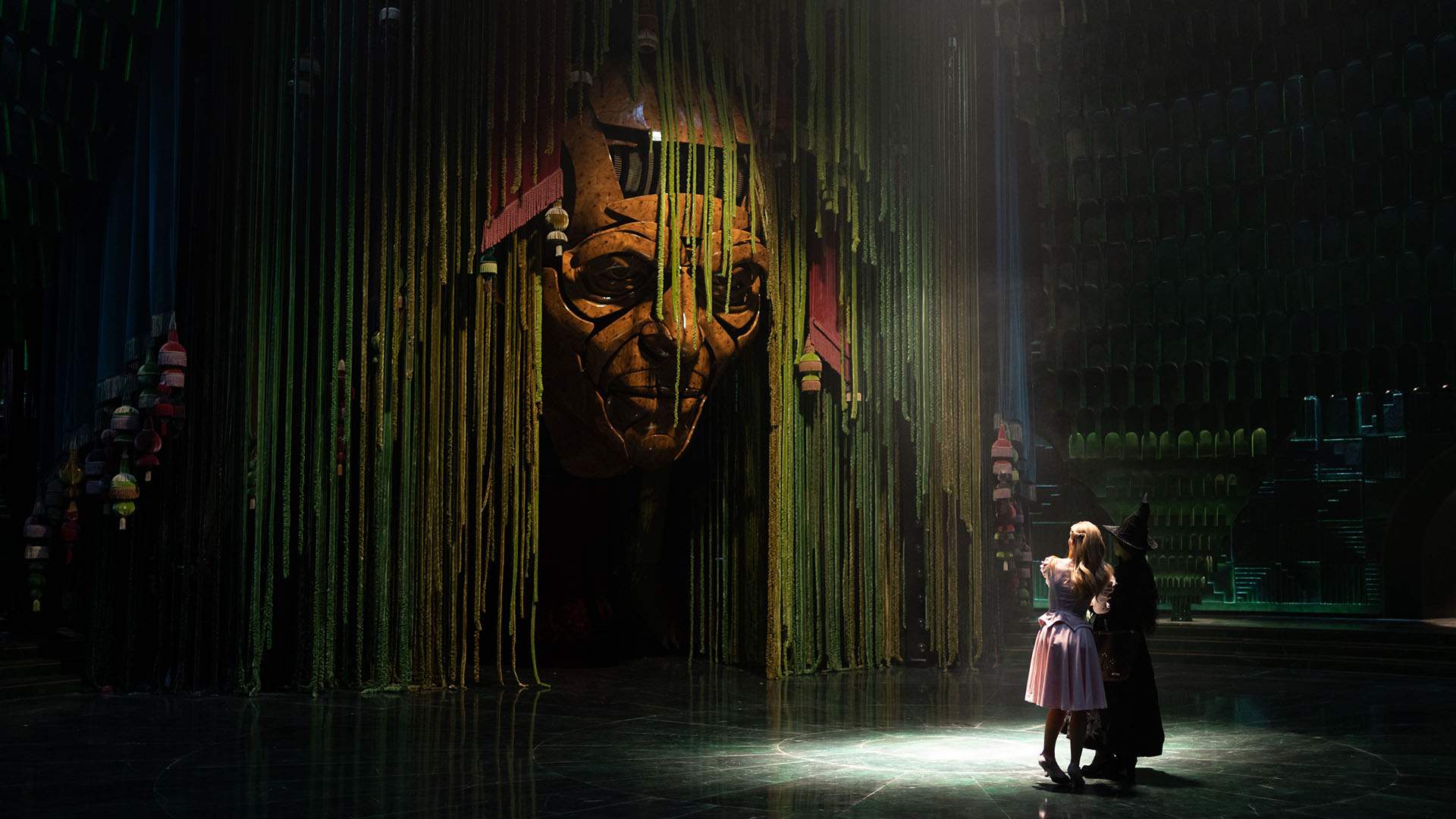
On the Once-in-a-Lifetime Opportunity of Building a Throne Room Around a Mechanical Version of Jeff Goldblum's Head
"It was so exciting. Every film has influenced the last one. So back on The Prestige — and really Bram Stoker's Dracula, we did automatons and mechanics, and we had to puppeteer the head and get expressions.
So the joy of realising we had, one, a phenomenal special effects scene. Who could do that? And puppeteer it? And then secondly, okay, we've got the head, and if we could come through the curtain and say 'I am Oz' and put an eye through it, that's exciting.

But then you think, 'well, what about the curtain?'. And so we came up with all these string curtains, it's almost like an art installation. We sat there for a very long time with drapers and mechanical people. We'd sit there at the end of the day and try all different things. And we had Joss [Carter, Aquaman and the Lost Kingdom], the puppeteer, who was just brilliant.
It comes down to just trying something, developing it and and being with the right people. And it's people — you're with all these people, and they're all creative, and the fun out of it is remarkable."

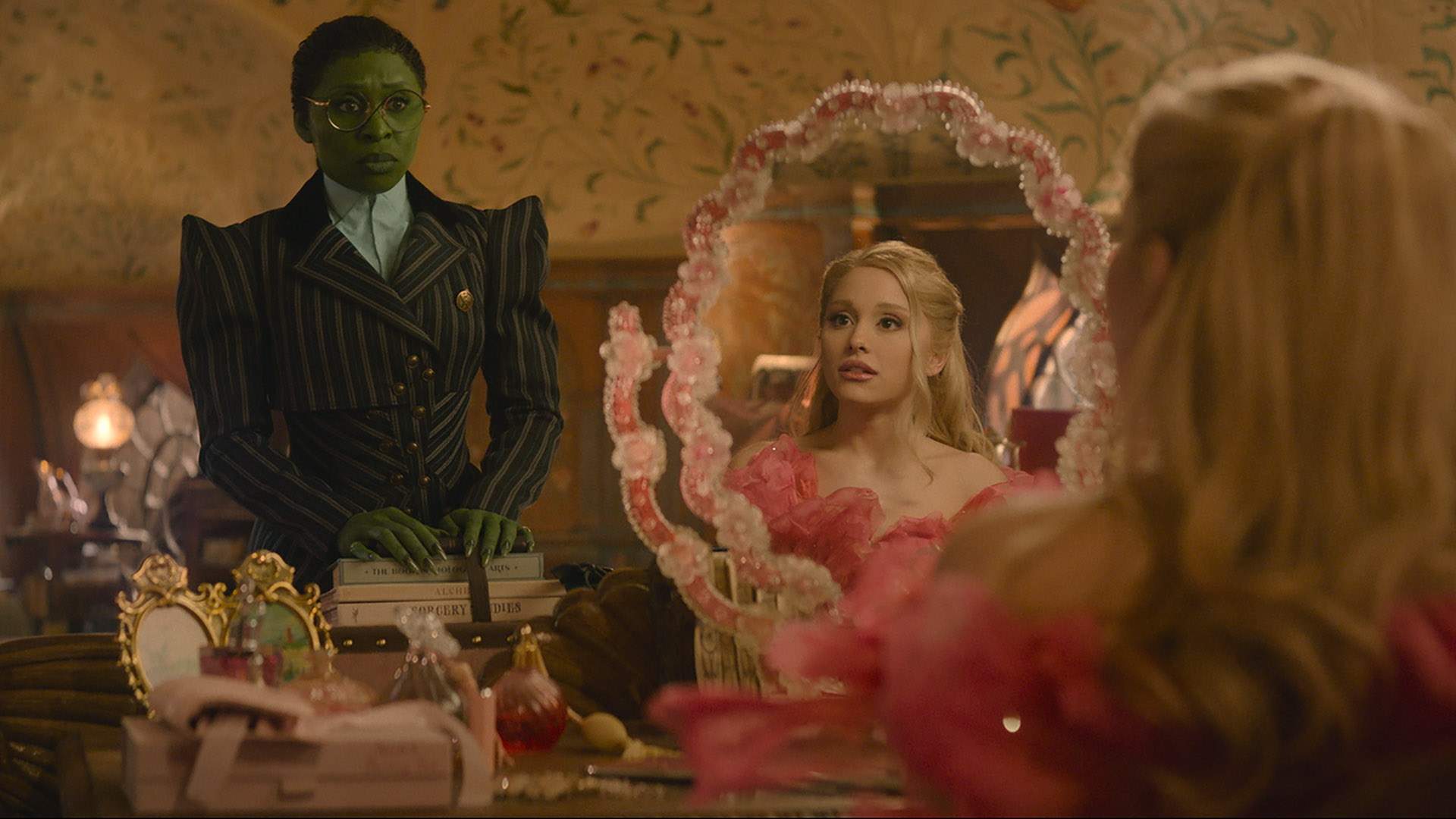
On What Crowley Makes of His Career Three-Decade-Plus Career in Cinema So Far — and What Gets Him Excited About a New Project
"I think when I look back, I just think 'wow, I got a bit lucky with the people I met'. There's a huge part of luck in if you happen to bump into the right people when you're younger. It's just like if you turn left at a certain time. So I look back at it and wonder 'how did all that happen?'.
And I just like to get excited. So what does that mean now? Still to this day, I remember walking on to the old MGM lot for my first day at Hook and there was a ship on stage 27. They built a water tank. There was a ship in it, the Hook ship. It was giant, and it was just like 'this is incredible'.

Interstellar
So I'm really just looking to world-build. Films like Wonka and Wicked opened those doors — things I've not done before. I wouldn't have said, I couldn't have said to you that I would end up making lots of musicals. To me, that wasn't even in my mind when we were doing Interstellar.
'I do lots of musicals? You're going to do four musicals?' I couldn't imagine that, but they've been some of the most-interesting design jobs I've ever had.
So definitely new experiences, new journeys. You've got to keep yourself interested, you especially as you get older."

Wicked releases in Australian cinemas on Thursday, November 21, 2024, with limited previews on Wednesday, November 20 — and tickets for the latter on sale now.
